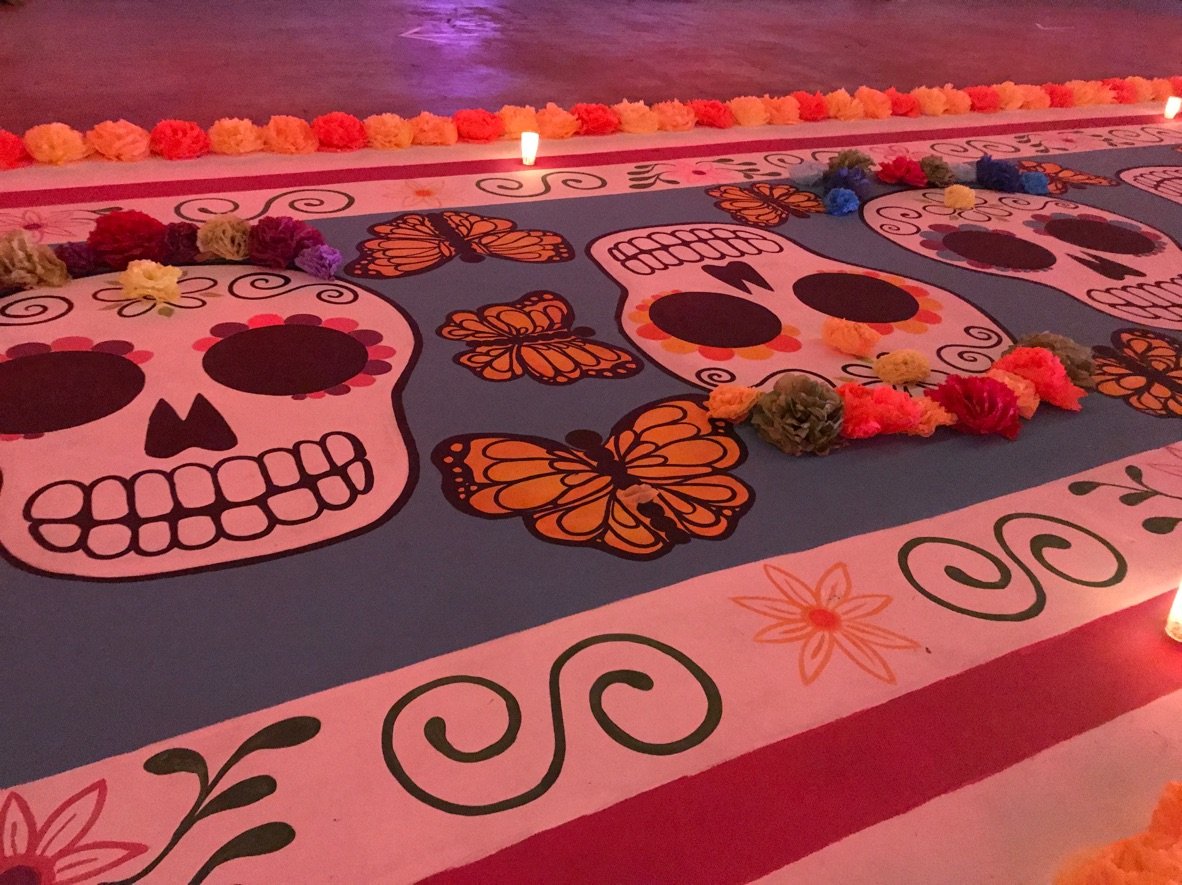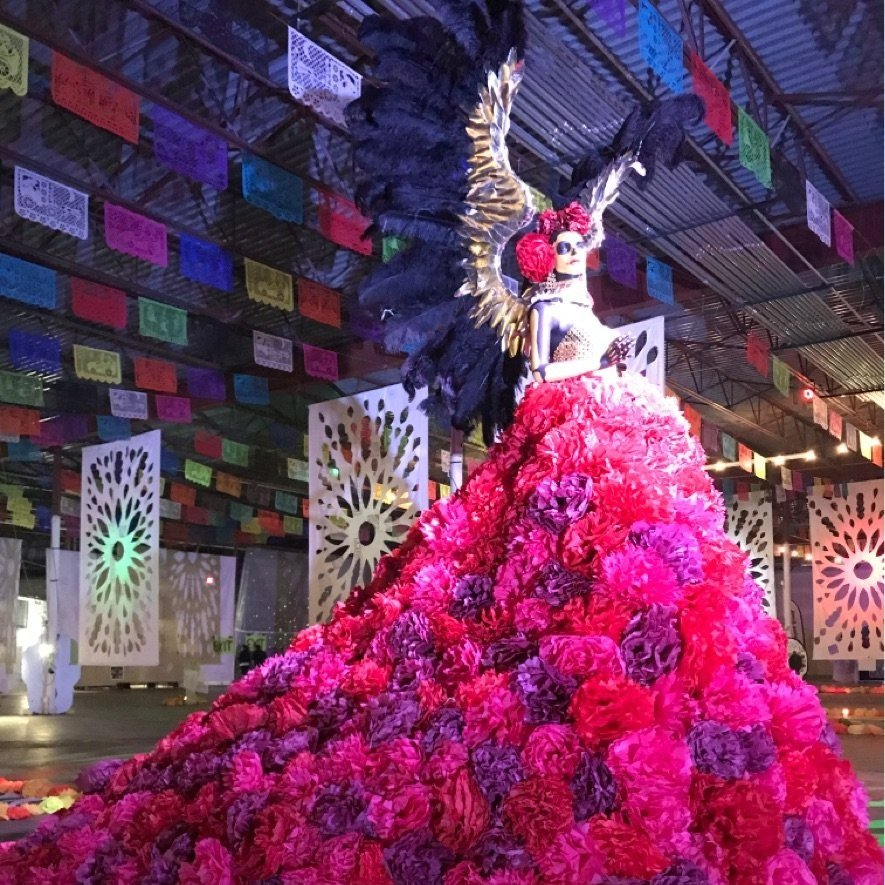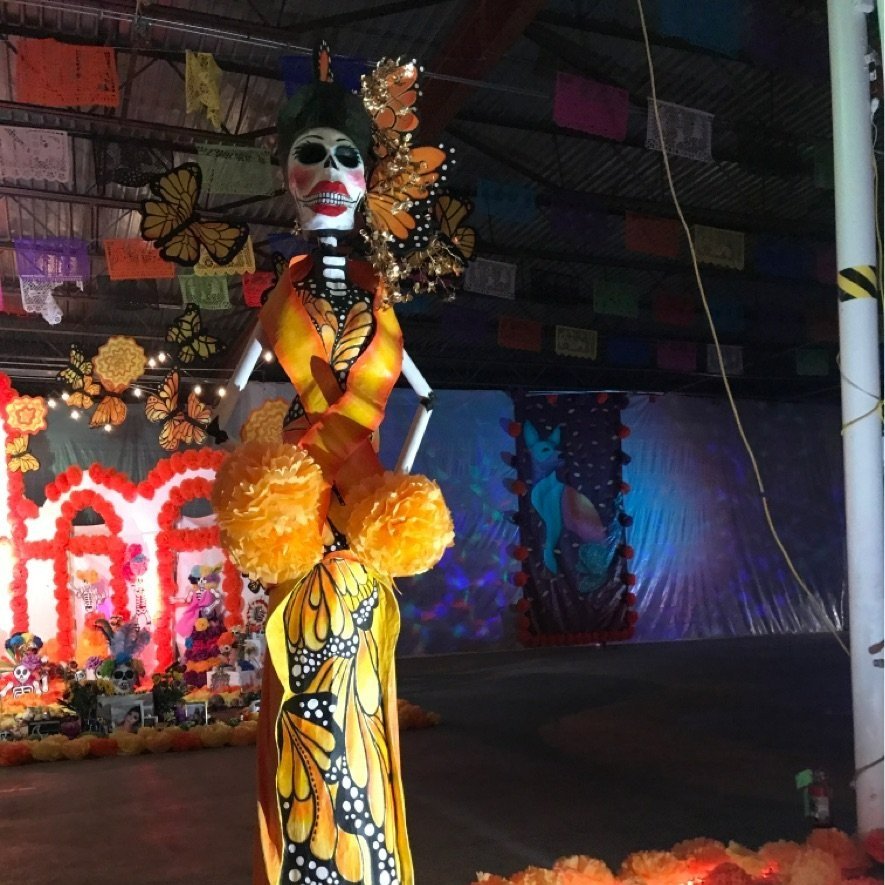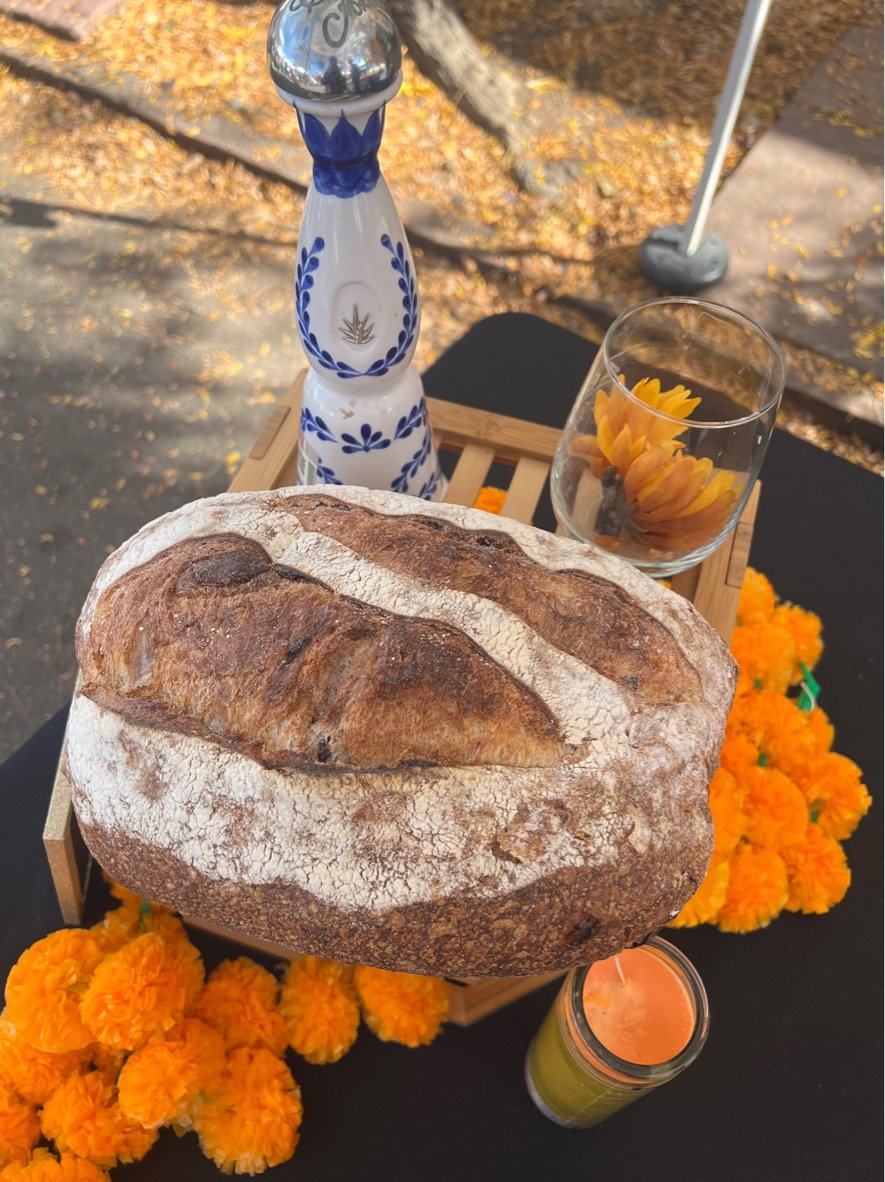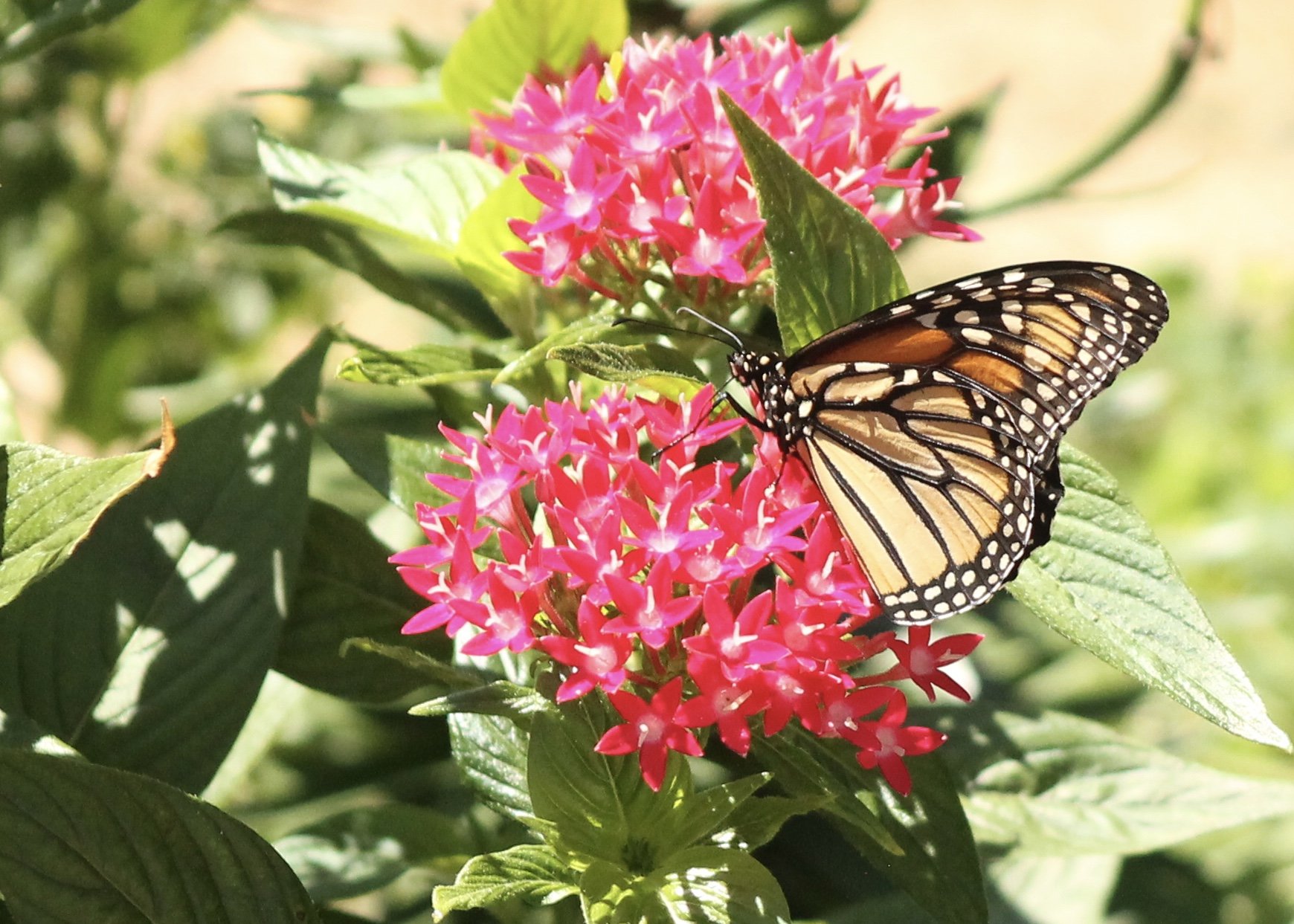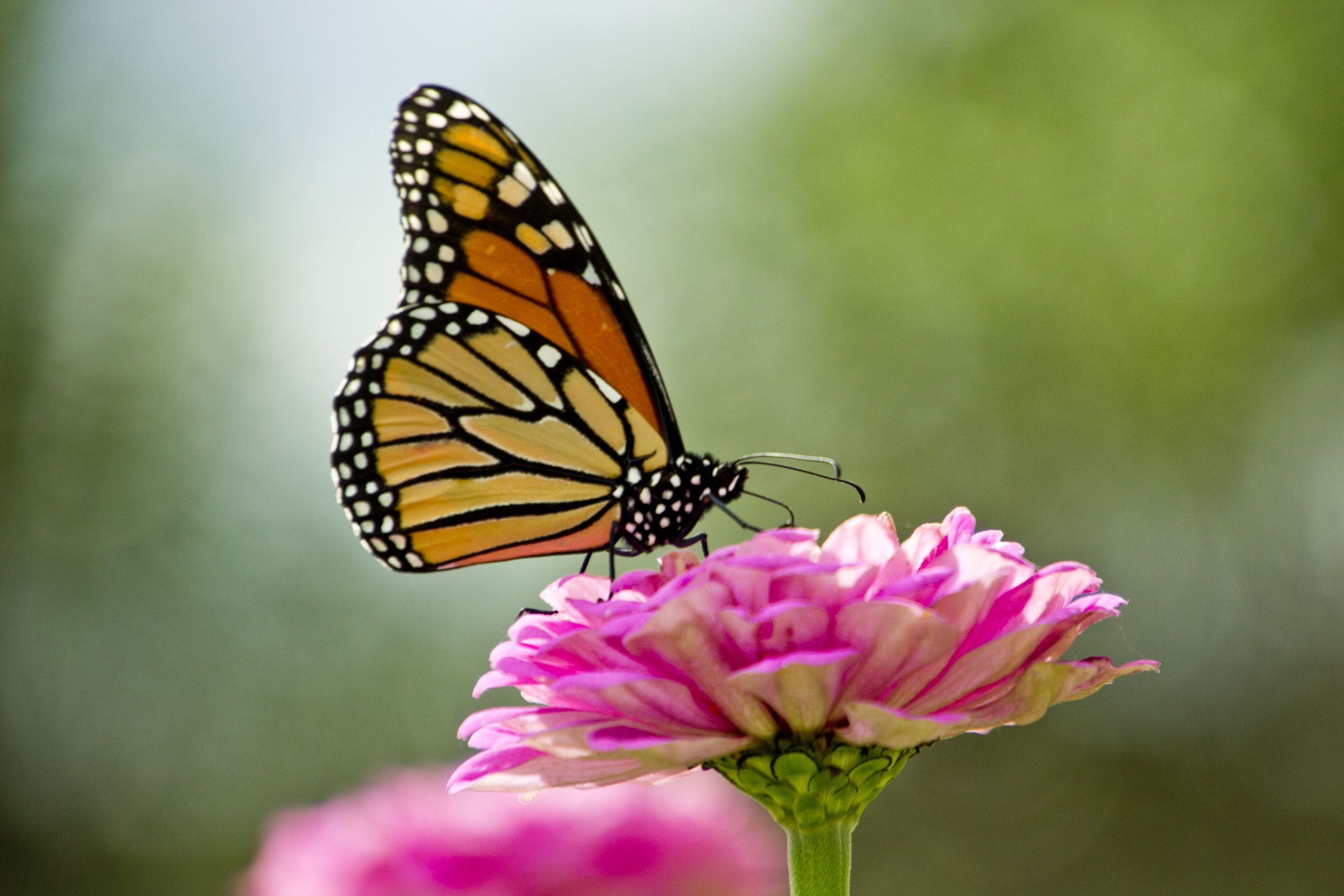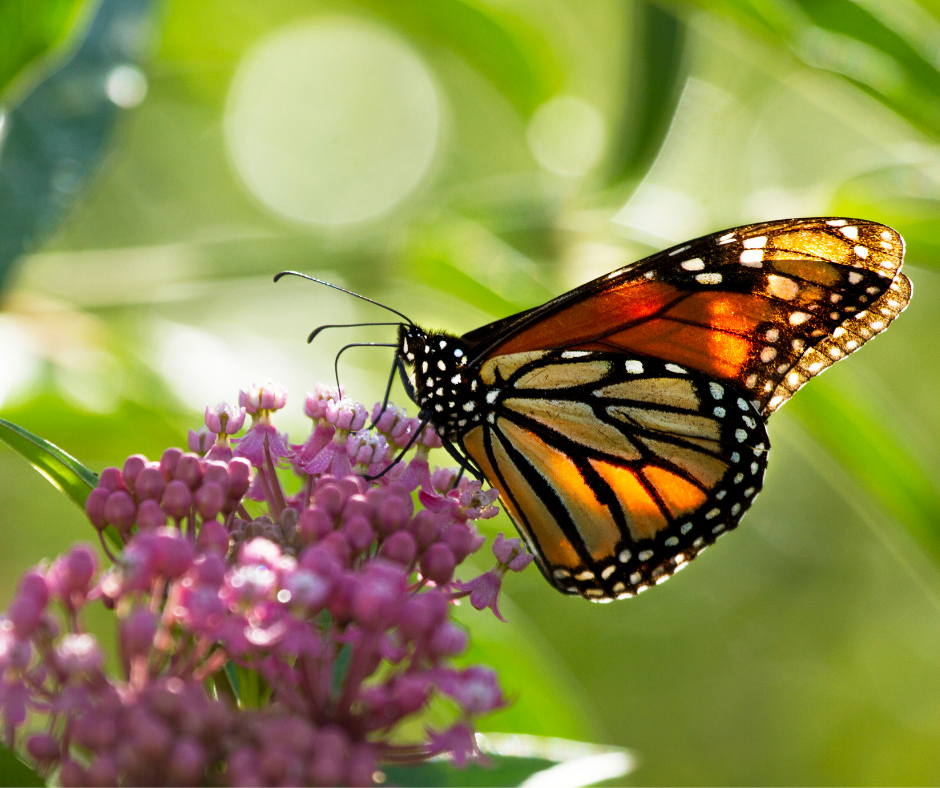The Connection Between the Monarch Butterfly and Día de Los Muertos
By Breanna Gonzalez, HECHO’s Colorado Field Coordinator.
Although Día de Los Muertos (Day of the Dead) originally started in Michoacán, Mexico, where my mom's family is from, this tradition is also observed in other Latin American countries and Latino communities, but in different ways.
In Mexico, Día de Los Muertos is traditionally celebrated on November 1 and 2 when families gather to honor and remember deceased loved ones. During this two-day holiday, we create home altars or "ofrendas," prepare traditional dishes, and have other rituals that mean so much to all of us, growing with this heritage.
Día de Los Muertos in Mexico is as complex as our history. Our indigenous people of the pre-Columbian era, the including the Aztecs and the Purépecha people, believe the aftermath was very sacred and must be celebrated, not mourned. During colonization, the Spanish brought different Catholic beliefs about life and death. The Day of the Dead became a Mexican tradition where both cultures came together and intermingled despite their differences.
When you see an “ofrenda” or an altar for Día de Los Muertos, there is an incredible and unique fusion of indigenous and Catholic symbols and representation. Catholic candles with saints, crucifixes, and rosaries are mixed with marigold flowers and the “Calavera” (skull), which both have profound meanings for our indigenous people.
The marigold flowers, the cempasúchil or “flor de muerto” (flowers of the dead), symbolizes the brevity of life and it is believed that its scent guides our ancestors to their altars. The Calaveras are a reminder of our own mortality, and the sugar skulls you see in the altars represent the people who have passed away. These “ofrendas” display the photos of our deceased loved ones, and we also place the foods they enjoyed when alive to entice them to visit us.
Growing up seeing death as a celebration of life and respecting my elders has affected my spirituality. Every year, on November 2, I share a meal with my grandfather, the closest person in my life who has passed away. I bring his favorite food, pan dulce (sweet bread and hot chocolate), to the altar and eat with him. But I also “see him” throughout the year thanks to another belief linked to this Mexican tradition.
My earliest memory of Día de Los Muertos was when I was a child and saw a monarch butterfly. Every time we saw one, my mom said, "Oh, that's your grandmother," or any of the loved ones in our family who had passed away.
The ancient Purépecha people of northwestern Michoacán believed that the monarch butterflies were the souls of those who have passed over to the afterlife. Their 3,000-mile migration from northern Canada to Michoacán happens in November. To this day, we believe the Monarch butterflies are the spirits of our loved-ones and ancestors returning every year on the Day of the Dead.
Besides its significance in our cultural heritage and its undeniable beauty, the Monarch butterflies are important pollinators essential for many ecosystems. Unfortunately, Monarch butterflies were officially declared an endangered species this past summer by the International Union for Conservation of Nature. They are threatened by habitat destruction and climate change.
For this year’s Día de Los Muertos, I would like to pay tribute to a Mexican environmental activist who died defending the Monarch butterfly. Homero Gómez González tirelessly defended the conservation of the monarch butterfly and its habitat. Before being found dead, it was reported that this conservationist received threats from an organized crime group.
I hope that this Día de Los Muertos, people will take this opportunity to learn more about the symbolism and meaning of this deeply spiritual tradition that is important to so many of us (it is not Halloween). And we also carry on Gómez’s legacy in protecting the Monarch butterfly and its habitat.

